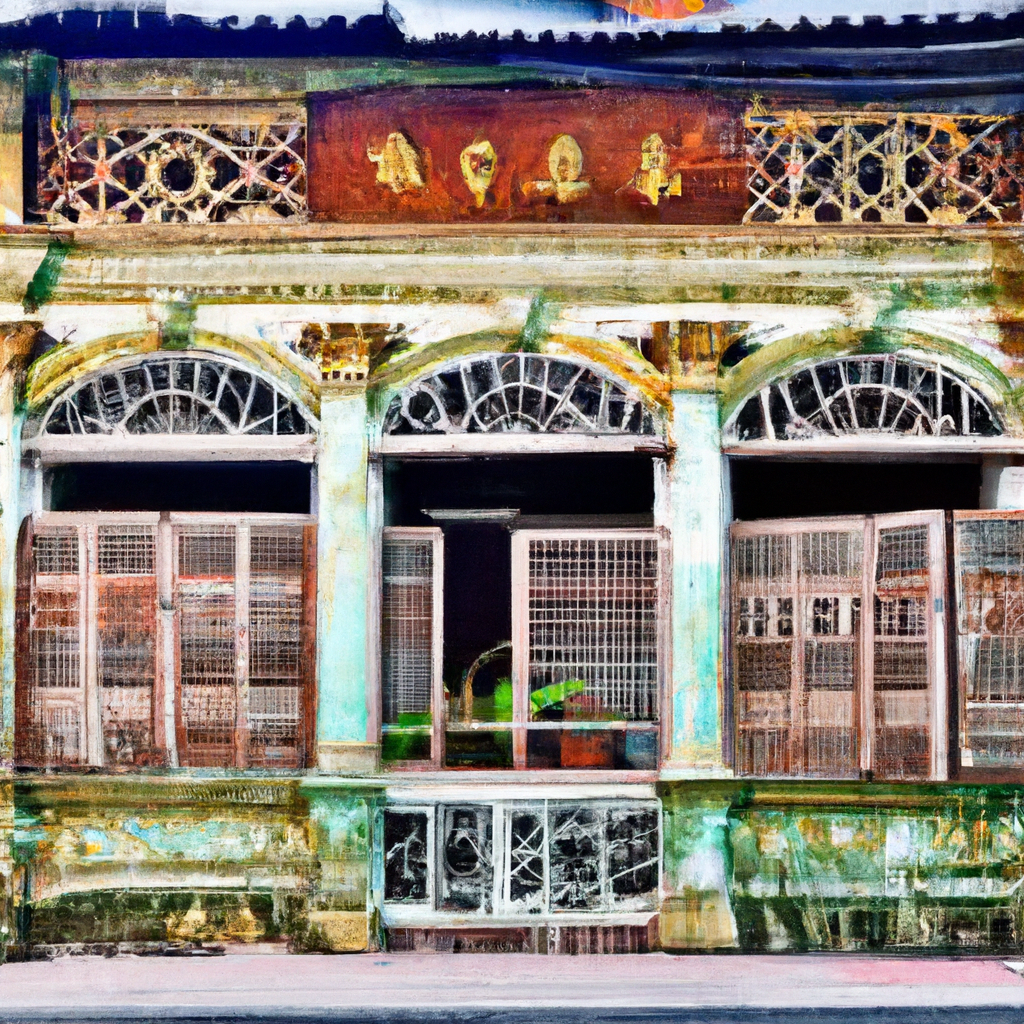Are you ready to embark on a captivating journey through the rich history of Old Phuket Town? Prepare to be amazed as you delve into the fascinating transformation of this vibrant city in Thailand. Explore the intricate details of its historical architecture, wander through its bustling streets filled with charming cafes and boutique shops. Discover the true essence of Thai culture as you savor the mouthwatering flavors of local cuisine and soak up the sun on the pristine beaches. Join us on this historical journey and let the allure of Old Phuket Town transport you back in time.
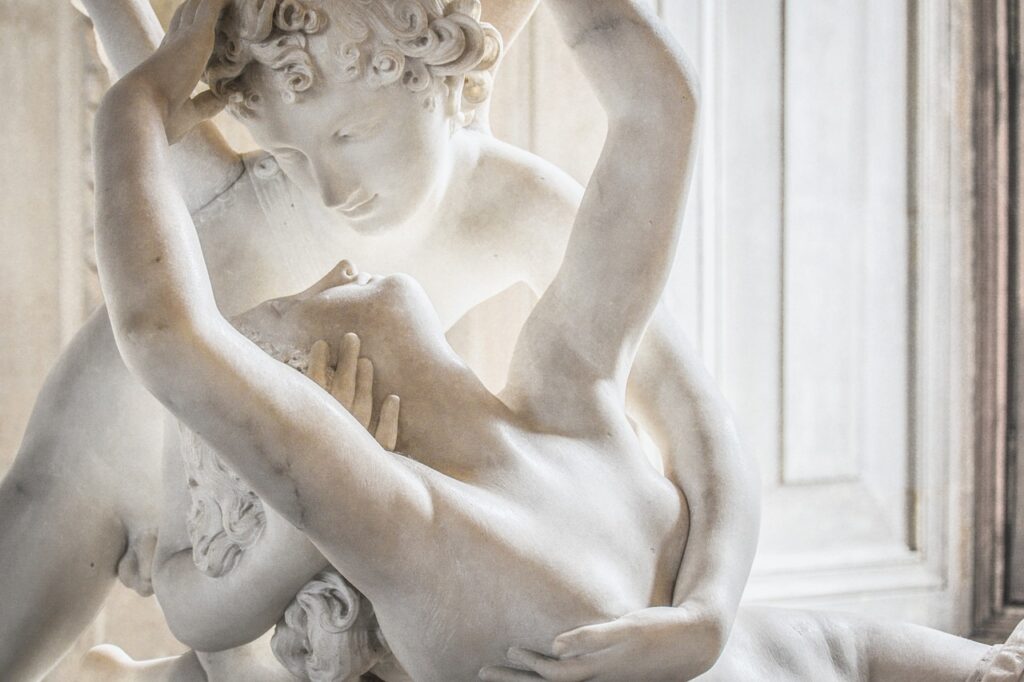
The Founding of Phuket Island
Phuket Island, located in the Andaman Sea, has a rich and fascinating history that stretches back centuries. The island was originally home to small communities of sea gypsies, who built their homes on stilts along the coastline. These early settlers relied on fishing and trading with passing ships for their livelihood.
Early Settlers
As time went on, Phuket Island became an important trading post in the region. The island attracted settlers from various cultures, including Chinese and Portuguese traders. These early settlers brought with them their own customs, traditions, and architectural styles, which would have a lasting impact on the development of the island.
Influence of Chinese and Portuguese Cultures
The Chinese and Portuguese cultures had a significant influence on the development of Phuket Island and its architecture. The Chinese immigrants brought with them their rich cultural heritage, including their beliefs in Buddhism and Taoism. This can be seen in the numerous Chinese shrines and temples that are scattered throughout Old Phuket Town.
The Portuguese, on the other hand, introduced their own architectural style to the island. The Sino-Portuguese architecture combines elements of Chinese and European styles, resulting in a unique and distinctive aesthetic. This fusion of cultures can be seen in the ornate facades, colorful tiles, and intricate carvings that adorn many of the buildings in Phuket Town.
The Rise of Phuket Town
Phuket Town experienced a major boom in the 19th century, thanks to the discovery of tin in the surrounding hills. The tin mining industry attracted a large number of Chinese laborers, who came to work in the mines. As the industry grew, so did Phuket Town, with new buildings and infrastructure being constructed to support the mining activities.
Tin Mining Boom
The tin mining boom brought great wealth to Phuket Island and its residents. With the influx of money, Phuket Town began to transform into a bustling and prosperous city. The streets were lined with shops and businesses, and the town became a center of trade and commerce in the region. The tin mining industry brought economic prosperity to the island for several decades.
Development of Sino-Portuguese Architecture
During the tin mining boom, the Sino-Portuguese architectural style flourished in Phuket Town. Wealthy mine owners and merchants commissioned the construction of elaborate mansions and shophouses, showcasing the unique blend of Chinese and European influences. The Sino-Portuguese buildings were characterized by their elegant facades, intricate details, and a blend of vibrant colors.

The Decline and Revival
The boom years of the tin mining industry came to an abrupt end with the outbreak of World War II. The war disrupted trade and led to the decline of the industry, leaving Phuket Town in a state of stagnation. The once-thriving city fell into disrepair, and many of the historic buildings were left abandoned.
Impact of World War II
World War II had a devastating impact on Phuket Town. With the disruption of trade and the decline of the tin mining industry, many people left the city in search of better opportunities. The once-prosperous city became a shadow of its former self, with crumbling buildings and a struggling economy.
Rediscovery and Preservation Efforts
In recent decades, there has been a renewed interest in the preservation and revitalization of Phuket Town’s historical buildings. Efforts have been made to restore and conserve the Sino-Portuguese architecture that defines the city’s identity. The preservation of these buildings has not only helped retain the cultural heritage of the island but has also become a major tourist attraction.
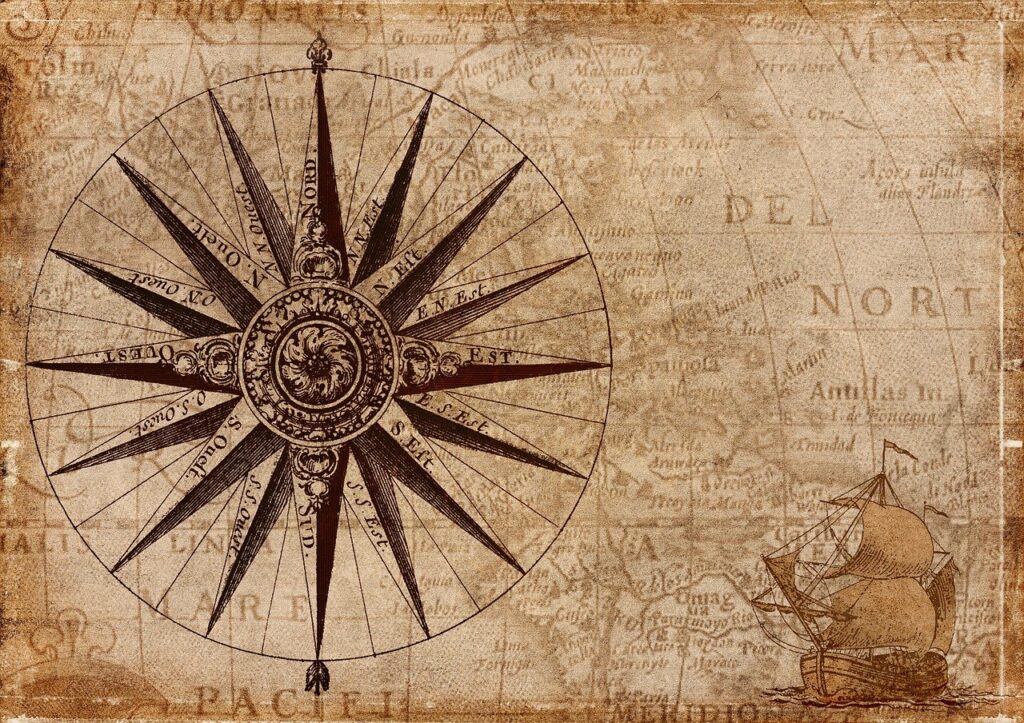
Exploring Sino-Portuguese Architecture
The Sino-Portuguese architecture in Phuket Town is a visual delight, with its unique and distinctive characteristics. The buildings are often characterized by their ornate facades, colorful tiles, and intricate carvings. The architecture reflects the fusion of Chinese and European styles, resulting in a visually appealing and culturally significant aesthetic.
Distinctive Characteristics
One of the main characteristics of Sino-Portuguese architecture is the use of brightly colored tiles. The facades of the buildings are adorned with vibrant tiles, often featuring intricate patterns and designs. Another distinct feature is the use of ornate carvings, which can be found on doors, windows, and balustrades.
Notable Buildings and Streets
Walking through the streets of Phuket Town, you will come across many notable buildings that showcase the Sino-Portuguese architecture. Thalang Road, in particular, is filled with beautiful examples of these buildings. The Old Phuket Town area is home to the iconic Thai Hua Museum, which offers a fascinating glimpse into the history and culture of Phuket Island.
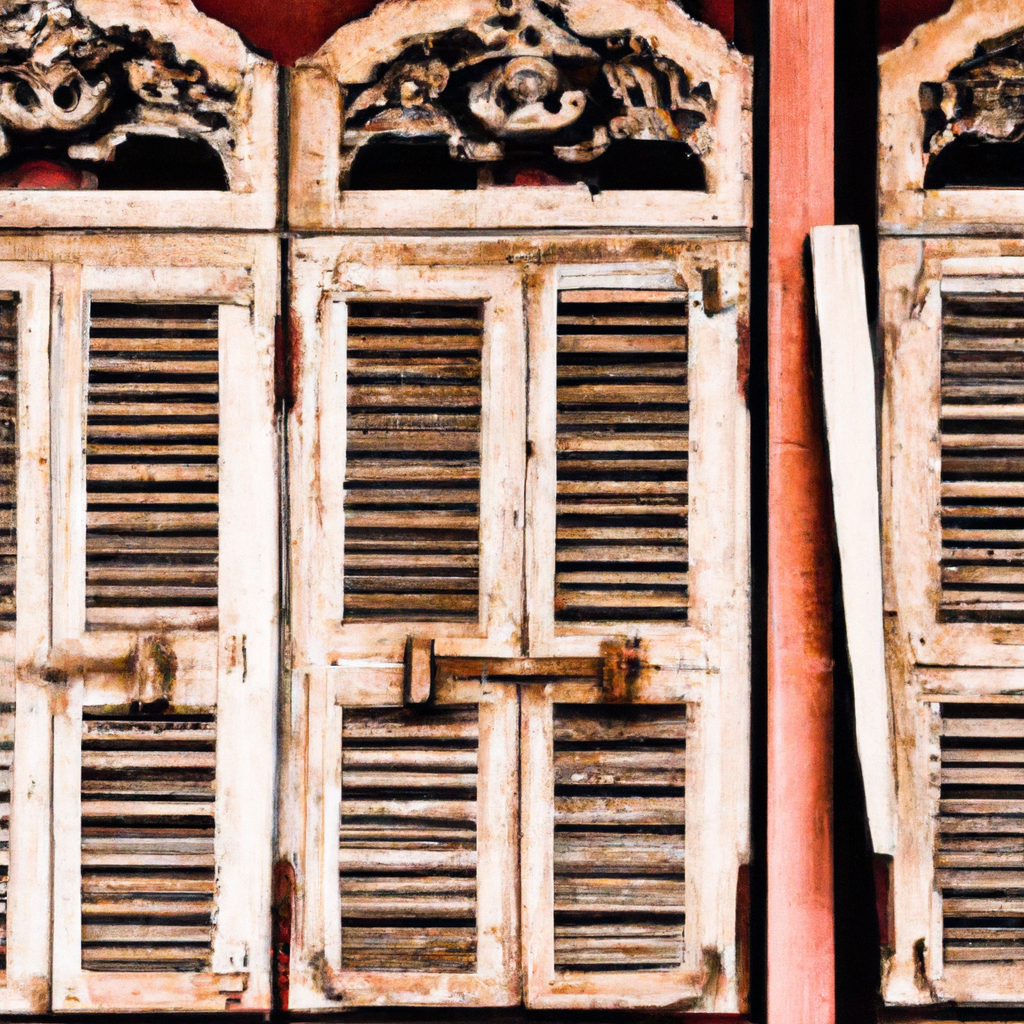
Cultural Heritage of Old Phuket Town
In addition to its architecture, Old Phuket Town is also rich in cultural heritage. The Chinese influence can be seen in the many shrines and temples scattered throughout the area. These places of worship are not only important religious sites but also serve as repositories of history and culture.
Chinese Shrines and Temples
The Chinese community in Phuket Town has a strong presence, and this is reflected in the numerous Chinese shrines and temples. These places of worship are beautifully adorned with colorful decorations and intricate artwork. They provide a tranquil space for worship and reflection and serve as a reminder of the island’s cultural diversity.
Peranakan Influence
Phuket Town also has a significant Peranakan community, which is a blend of Chinese and Malay cultures. The Peranakan influence can be seen in the food, language, and customs of the local community. The Peranakans have made significant contributions to the cultural fabric of Phuket Town and their heritage is celebrated and preserved.
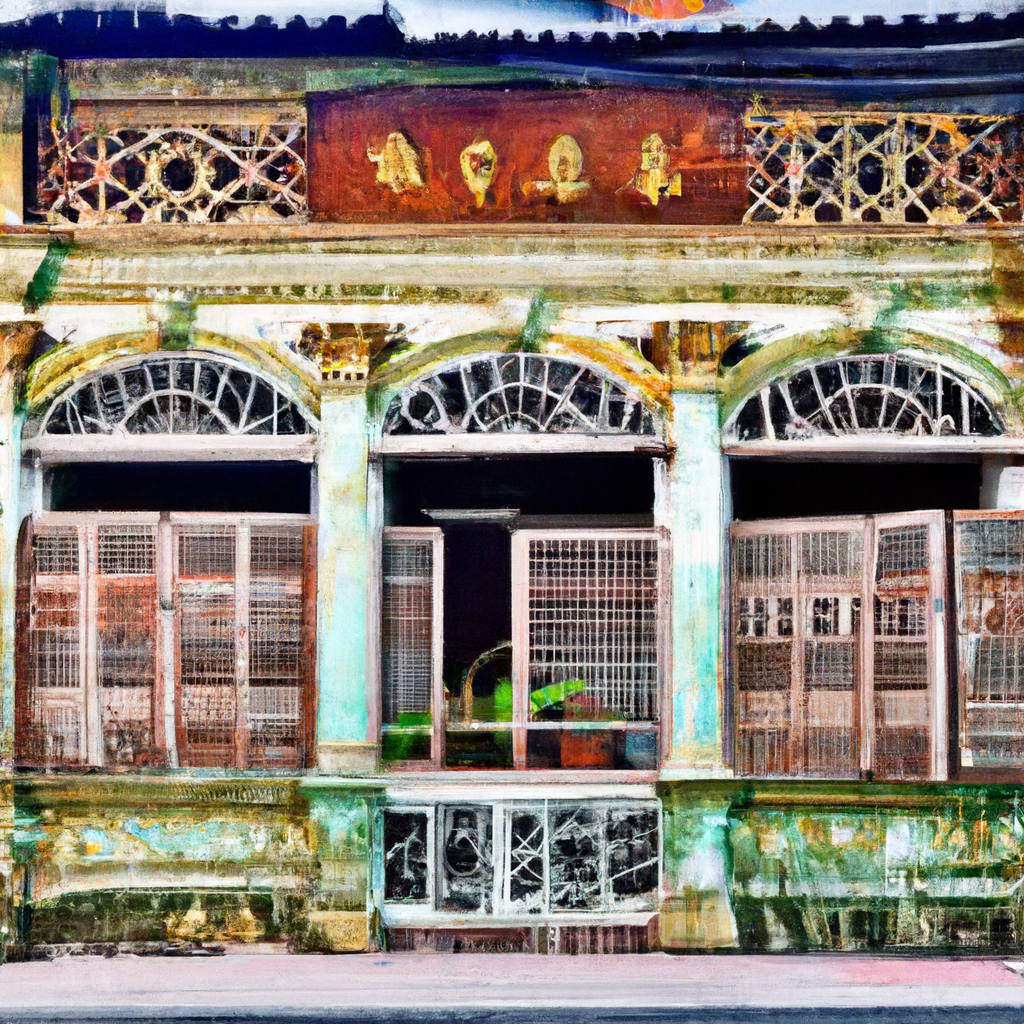
Uncovering Phuket’s Colonial Past
In addition to its Chinese and Portuguese influences, Phuket also has a colonial past that is reflected in its architecture. The Portuguese, who arrived in the 16th century, built forts and other structures that still stand today. These historic buildings provide a glimpse into the island’s colonial history and its connections to European trade and exploration.
Portuguese Forts and Buildings
The Portuguese left behind several forts and buildings on Phuket Island, which serve as a reminder of their presence. One of the most notable structures is the Fort Dumnoen, which was built to protect the island from pirates. The fort has been well-preserved and offers visitors a chance to step back in time and imagine life during the colonial era.
European Influences
Phuket’s colonial past also extends to other European influences, such as Dutch and British traders who visited the island. These influences can be seen in the architecture of some of the older buildings in Phuket Town. European-style elements, such as windows with shutters and balconies, add to the unique charm and character of the town.
Old Phuket Town Today
Today, Old Phuket Town is a vibrant and dynamic part of the city. The historic streets and buildings have been revitalized, attracting tourists from around the world. Walking through the narrow streets of Old Phuket Town, you will encounter a mix of art galleries, cafes, shops, and museums.
Walking Street Markets
One of the highlights of Old Phuket Town is the walking street markets that take place regularly. Thalang Road, in particular, comes alive every Sunday with vendors selling local handicrafts, delicious street food, and souvenirs. The markets provide a wonderful opportunity to immerse yourself in the vibrant and bustling atmosphere of Phuket’s cultural heritage.
Art and Cultural Festivals
Old Phuket Town also hosts a variety of art and cultural festivals throughout the year. These events showcase the rich artistic and cultural traditions of the island. From colorful street parades to traditional dance performances, these festivals offer a unique opportunity to experience the vibrant cultural tapestry of Phuket.
Preserving and Promoting Old Phuket Town
Efforts have been made to preserve and promote the historical and cultural significance of Old Phuket Town. Conservation projects have been undertaken to restore and maintain the Sino-Portuguese buildings, ensuring that they remain an integral part of the city’s identity. Local authorities and organizations have also worked to promote tourism and raise awareness of the importance of preserving the historical heritage of Phuket.
Conservation Efforts
Conservation efforts in Old Phuket Town have focused on restoring and maintaining the Sino-Portuguese buildings. The aim is to preserve the architectural heritage of the town and ensure that future generations can appreciate its historical and cultural significance. Local organizations and community initiatives have played a crucial role in these efforts, working hand in hand with government bodies to protect and promote Old Phuket Town.
Tourism and Economic Impact
The preservation and promotion of Old Phuket Town have had a positive impact on tourism and the local economy. The historic streets and buildings have become major tourist attractions, drawing visitors who are interested in the island’s rich history and cultural heritage. The influx of tourists has boosted the local economy, with shops, restaurants, and hotels benefiting from increased patronage.
Exploring the Tourist Attractions
Visitors to Phuket Island can explore a range of tourist attractions that showcase the history and cultural heritage of Old Phuket Town. From museums to historic streets, there is something for everyone to enjoy and learn from.
Phuket Thai Hua Museum
The Phuket Thai Hua Museum is a must-visit for those interested in the island’s history and culture. Housed in a beautifully restored Sino-Portuguese building, the museum offers a comprehensive collection of artifacts and exhibits that tell the story of Phuket. From ancient artifacts to contemporary artworks, the museum provides a fascinating journey through time.
Thalang Road
Thalang Road is the heart and soul of Old Phuket Town. This historic street is lined with colorful Sino-Portuguese buildings and is a hive of activity. Walking along Thalang Road, you will find a mix of shops, cafes, and galleries, offering a unique blend of traditional and contemporary experiences. The street also comes alive during the walking street markets, offering a taste of the local culture.
Experiencing Phuket’s Local Cuisine
No visit to Phuket would be complete without indulging in the mouthwatering local cuisine. The island’s diverse culinary traditions reflect its multicultural heritage, with influences from China, Malaysia, and India. From street food stalls to upscale restaurants, there are endless opportunities to savor the flavors of Phuket.
Unique Thai Dishes
Thai cuisine is renowned worldwide for its bold flavors and aromatic spices. From spicy curries to tangy salads, there is a wide variety of dishes to tickle your taste buds. Some must-try dishes include Pad Thai, Tom Yum Goong, and Green Curry. You can find these delicacies at local eateries or even try your hand at a cooking class to learn the secrets of Thai cooking.
Peranakan Fusion Food
The Peranakan community in Phuket has also contributed to the island’s culinary scene. Peranakan fusion food combines Chinese and Malay flavors, resulting in a unique and delicious cuisine. Don’t miss the opportunity to try dishes like Laksa, Nasi Ayam, and Kueh Chang. These mouthwatering delicacies are a testament to the island’s rich cultural heritage.
In conclusion, the historical journey of Old Phuket Town is a captivating exploration of a bygone era. The influence of Chinese and Portuguese cultures, the rise and decline of the tin mining industry, and the efforts to preserve and promote the cultural heritage are all part of the tapestry that makes Phuket Island an enchanting destination. Whether you’re strolling through the streets admiring the Sino-Portuguese architecture or indulging in the flavorful local cuisine, Old Phuket Town offers a unique and immersive experience that will transport you back in time.
